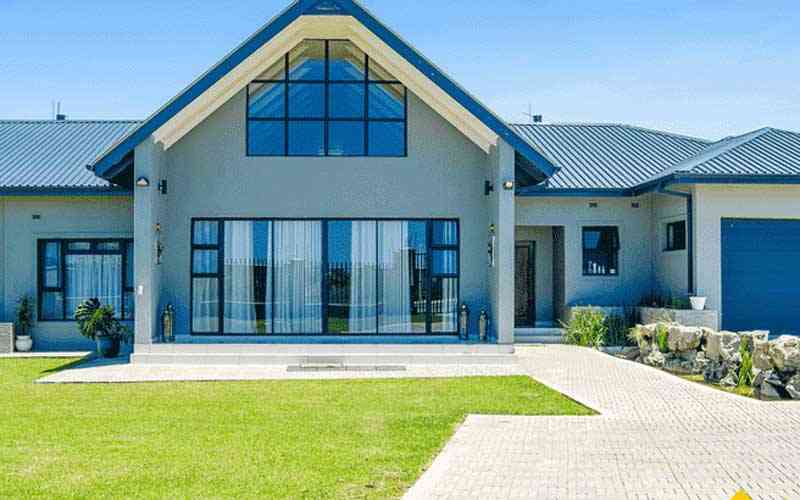
The Zimbabwean property market is facing significant challenges, marked by skyrocketing property prices that seem incongruous when compared to those in neighbouring South Africa.
These challenges stem from a complex interplay of factors, including currency instability, market dynamics, liquidity constraints, and mortgage availability.
Understanding these issues in depth, along with examining how other countries have effectively managed similar situations, can provide valuable insights into potential solutions for Zimbabwe.
To fully grasp the situation in Zimbabwe, it is essential to delve into the various underlying issues that have created the current property market environment.
These problems are deeply intertwined, each exacerbating the other, creating a cycle that is difficult to break. Here, we dissect the primary factors contributing to the surging property prices.
Currency instability in Zimbabwe, stemming from decades of hyperinflation and currency devaluation, has severely undermined confidence in the local currency.
As a result, most real estate transactions now occur in US dollars, exacerbating a significant gap between property prices and the average income levels of Zimbabweans. This instability intensifies the affordability crisis and distorts the property market dynamics, posing formidable challenges to economic stability and equitable access to housing.
The Zimbabwean property market operates as a seller's market, characterized by soaring demand that far surpasses available supply, thus inflating property prices.
- US dollar liquidity preference
- Ceteris Paribus: Going in circles: Demystifying the Zim currency outlook
- Man offers US$20 for son’s upkeep
- Adventurous RBZ: Finding a balance becoming a tall order
Keep Reading
Key factors contributing to this imbalance include high construction costs and bureaucratic challenges, which deter new developments.
Additionally, prime locations face a scarcity of properties, intensifying competition and driving prices upwards.
This environment heavily Favors sellers, exacerbating affordability issues and underscoring the need for interventions to stimulate supply and foster a more balanced market for prospective buyers.
Liquidity issues compound Zimbabwe's property market challenges.
The financial system's limited liquidity restricts funds available for mortgages, coupled with high interest rates and stringent lending conditions that hinder buyer financing. Consequently, many resort to cash purchases, exacerbating price inflation.
This financial environment intensifies affordability barriers, perpetuating a cycle where demand for housing outpaces supply. Addressing these systemic issues is crucial to fostering a more inclusive market, where accessible mortgage options can mitigate cash reliance and stabilise property prices, ultimately promoting sustainable growth and equitable homeownership opportunities for Zimbabweans.
Zimbabwe’s history of hyperinflation and currency devaluation has led to a severe lack of confidence in the local currency. Consequently, real estate transactions are predominantly conducted in US dollars.
However, the scarcity of US dollars in the country has created a significant disparity between property prices and the average income levels of Zimbabweans.
This currency instability exacerbates the affordability crisis and distorts the property market.
Various countries outside Africa have implemented diverse policies to address housing market challenges, focusing on measures to stabilise prices and increase affordability.
In the early 2000s, the United States experienced a housing bubble fuelled by easy credit and speculative investment.
When the bubble burst in 2008, it triggered a substantial decline in property prices nationwide. In response, the U.S. government implemented a series of comprehensive measures.
The Federal Reserve aggressively lowered interest rates to near-zero levels, aiming to stimulate borrowing and economic activity.
Additionally, various stimulus packages were introduced to bolster the economy, including targeted support for homeowners through mortgage assistance programs.
The Dodd-Frank Act was also enacted to enhance financial oversight, promote transparency, and curb risky lending practices, thereby preventing a recurrence of the crisis. These measures were largely successful in stabilizing the housing market and averting a more severe economic downturn in the aftermath of the crisis.
However, critics contend that while effective in the short term, these policies may have inadvertently contributed to asset bubbles and exacerbated socioeconomic inequalities over the long term.
The United Kingdom has grappled with significant housing affordability challenges, particularly pronounced in London. In response, the government has implemented targeted policies to alleviate these pressures.
The Help to Buy Scheme stands out, offering equity loans to first-time buyers to facilitate property purchases with reduced initial deposits. Concurrently, the government has incentivized the construction of affordable housing through grants and developer incentives.
Additionally, regulations on the buy-to-let market have been tightened, including the introduction of taxes on secondary properties, aimed at curbing speculative buying and prioritising owner-occupier access to housing.
The Help to Buy scheme has been widely regarded as successful in facilitating entry into the property market for many first-time buyers.
However, critics argue that these initiatives have inadvertently contributed to price inflation by stimulating demand without a corresponding increase in housing supply, exacerbating affordability issues in the long term.
Singapore's government adopts a proactive approach to manage its real estate market.
The Housing and Development Board (HDB) constructs and sells affordable housing, ensuring widespread homeownership.
Periodic cooling measures, like increased stamp duties and tightened loan-to-value ratios, prevent property bubbles.
Careful management of land supply stabilizes prices. Singapore's model is praised for its effectiveness in providing affordable housing and averting property bubbles.
Challenges persist with high land prices and living costs, but proactive government interventions largely mitigate these issues.
Similarly, African countries have implemented strategies aimed at addressing property market dynamics and enhancing affordability, with notable success stories to consider.
South Africa's property market, though more stable than Zimbabwe's, contends with affordability challenges.
The government has implemented several measures to address these issues, including investing in large-scale affordable housing projects such as the Reconstruction and Development Programme (RDP) housing.
Additionally, schemes like Mortgage Default Insurance (MDI) support accessible mortgage products, and the South African Reserve Bank manages interest rates to balance borrowing and market stability.
These initiatives have notably boosted affordable housing availability. However, persistent economic disparities and high unemployment rates present ongoing challenges to their overall effectiveness in achieving broad housing affordability nationwide. Nigeria has tackled property market challenges through diverse initiatives.
Real Estate Investment Trusts (REITs) offer an alternative investment avenue, boosting capital inflows into the property sector. Public-Private Partnerships (PPPs) promote collaboration between government and private developers to expand affordable housing options.
The Nigeria Mortgage Refinance Company (NMRC) enhances mortgage liquidity, making homeownership more accessible.
These measures have successfully increased investment in the property market and improved mortgage availability.
However, bureaucratic inefficiencies and corruption pose significant challenges, potentially limiting the full impact of these programmes on addressing broader housing affordability issues across Nigeria.
Kenya has made significant strides in enhancing housing affordability. The Affordable Housing Programme, part of the Big Four Agenda, aimed to construct 500,000 affordable homes by 2022.
The establishment of the Kenya Mortgage Refinance Company (KMRC) supports this goal by providing affordable, long-term funding to primary mortgage lenders.
Infrastructure development in peripheral areas has expanded development opportunities, alleviating pressure on urban property prices.
These efforts have notably increased the supply of affordable homes.
However, challenges persist due to rapid urbanization and population growth, continuing to strain the housing market's capacity to meet growing demand as of 2024. Drawing from successful strategies implemented elsewhere, Zimbabwe can explore several potential solutions to mitigate its escalating property prices and improve housing affordability.
Learning from international and African examples, where measures such as currency stabilization, increased supply of affordable housing, enhanced mortgage availability, and regulatory reforms have been effective, Zimbabwe could adopt tailored approaches to address its specific market challenges.
These solutions aim to create a more balanced and accessible property market, benefiting both buyers and sellers alike.
- Dr Bekithemba Mpofu is a board member of the Zimbabwe REIT Association









